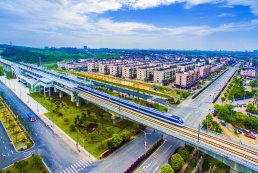First appeared in

Asian Development Bank
100 Climate Actions from Cities in Asia and the Pacific
A new building energy management system will be installed to monitor electricity, water, and gas consumption in 200 public buildings in Xiangtan.
A new building energy management system will be installed to monitor electricity, water, and gas consumption in 200 public buildings in Xiangtan.
While clean and renewable sources of energy have increased in PRC in recent years, many regions still rely on coal-powered facilities. This means that any excess power or heat leads to more emissions, and that energy efficiency measures can be an important tool for reducing building-sector emissions.
Energy management systems for buildings can be the first step for municipalities to understand how and when energy is used, before taking further steps to cut emissions from energy sources and buildings.
98K
TONS OF CO₂ EQUIVALENT REDUCED EACH YEAR
TONS OF CO₂ EQUIVALENT REDUCED EACH YEAR
Xiangtan is installing new building energy monitoring systems that will cover 200 public buildings, equaling around 900,000 square meters of floor space. By using smart technology and the internet of things, a building energy management system can manage both energy and utility systems, and works to promote demand-side energy conservation through timing schedules, occupation detection, and weather-based demand forecasts.
ADB provided a loan to cover the $ 5.7 million cost for the building energy system, which is a part of the ADB’s $150 million loan to the Xiangtan Low-Carbon Transformation Project.

It is expected that building energy management systems will be further installed in new and retrofitted buildings in Xiangtan between 2022 and 2045 (photo by Fang Yang).
The Challenge
Rapid urbanization in Xiangtan has resulted in a growth of the city’s urban development area and a simultaneous increase in emissions from buildings, many of which need to adopt new measures to increase energy efficiency.
Co-Benefits
Economic The new monitoring systems are expected to improve energy efficiency in buildings by 10%, which translates to cost savings that can be invested elsewhere.
Health Energy management systems will also improve the comfort of residents through air circulation and automatic climate controls.
Environment The project will result in energy savings of almost 24,000 MWh per year, reducing the amount of coal needed to produce energy for the power grid.

